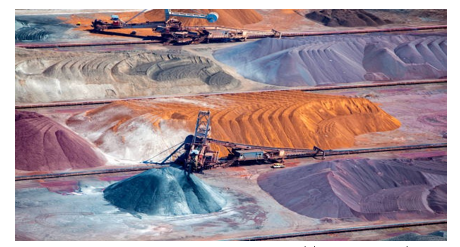INP-WealthPk
Amir Khan

The manufacturing and mining sectors have shown a positive growth, contributing significantly to Pakistan's GDP amid daunting challenges. Talking to WealthPK, Additional Secretary of Industries and Production Muhammad Asad Aslam said the Quantum Index of Large-Scale Manufacturing Industries (QIM) was used to monitor the performance of Large-Scale Manufacturing (LSM) on a monthly basis as a key indicator of industrial health. From July to March of the Fiscal Year 2024, LSM showed a slight decline of 0.1 percent, which marks a notable improvement compared to the 7.0 percent decrease seen in the previous year. He added that the sector was confronting significant challenges, especially in the textile industry, which was a substantial part of LSM. Factors such as rising input costs, declining export values, and increased power tariffs have reduced production.
Additionally, termination of the Export Finance Scheme and high interest rates have further exacerbated the sector's difficulties. According to the latest National Account Statistics, these sectors experienced growth rates of 2.4 percent and 4.9 percent respectively in FY2024 – a notable recovery from the previous year's declines of 5.3 percent and 3.3 percent. In FY 2024, these sectors accounted for a substantial 13.6 percent of the GDP, with Manufacturing alone making up 11.9 percent of the GDP. The manufacturing sector's diverse structure includes Large-Scale Manufacturing (LSM), Small-Scale Manufacturing (SSM), and slaughtering as categorized by the System of National Accounts (SNA). Historically, LSM has been the dominant force, representing 69.3 percent of the manufacturing sector and 8.2 percent of the overall GDP.
In comparison, small-scale manufacturing and slaughtering contribute 19.5 percent and 11.3 percent to the sector, adding 2.3 percent and 1.3 percent to the GDP, respectively. Syed Sibt-e-Abbas Zaidi, Joint Secretary of Industries and Production, noted that within the Food Group, wheat and rice milling experienced minor declines despite improved harvests. On the other hand, sugar production saw a slight increase due to the higher sucrose recovery rates, even though the overall output was lower. He added that the construction activities had also declined, impacted by the higher financial costs, reduced incomes, and lower government spending. “Tight monetary conditions and political uncertainty have played a role, alongside increased coal prices and decreased demand affecting cement production,” he pointed out.
Additionally, sluggish activity in industries such as automobiles and heavy machinery has led to lower steel utilization. The pharmaceutical sector has shown improvement due to stable exchange rates and higher medicine prices, yet the automobile industry continues to struggle with reduced production owing to low demand, high borrowing costs, and import restrictions. Despite these obstacles, the positive growth in the manufacturing and mining sectors shows resilience and potential for further development. The sectors' contributions to the GDP highlight their crucial role in the country's industrial sector and the broader economy.
Credit: INP-WealthPk













